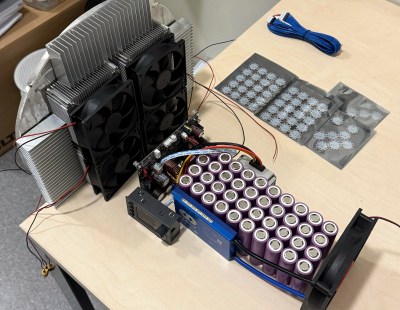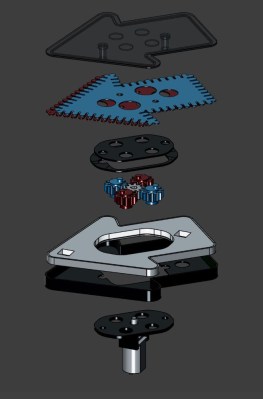[ApprehensiveHawk6178] reports that they have made the world’s longest range LED flashlight! While technically “handheld”, you’re gonna need both hands for this monster. According to the creator, it draws 1.2 kW (20 A @ 60 V) to deliver 100,000 lumens and approximately 20,000,000 candelas.
 This spotlight is made from 48 white LEDs, wired in 16S3P configuration, and is powered by a similarly beefy 20S2P battery pack. That 1.2 kW power draw generates a lot of heat which is dissipated with an array of heat sinks and five cooling fans. Total cost was in the order of $2,000 USD.
This spotlight is made from 48 white LEDs, wired in 16S3P configuration, and is powered by a similarly beefy 20S2P battery pack. That 1.2 kW power draw generates a lot of heat which is dissipated with an array of heat sinks and five cooling fans. Total cost was in the order of $2,000 USD.
It can be controlled via Bluetooth, and can run from its batteries for 30 minutes at full power. If you’d like to geek out over the specs click-through and read the discussion, a lot of technical detail is given and there are a bunch of photos showing the internals and assembly.
We’ve seen high-output LED lights with water cooling in the past, and wonder if that might be the next step for this particular build.
Thanks to [kms] for the tip.





















